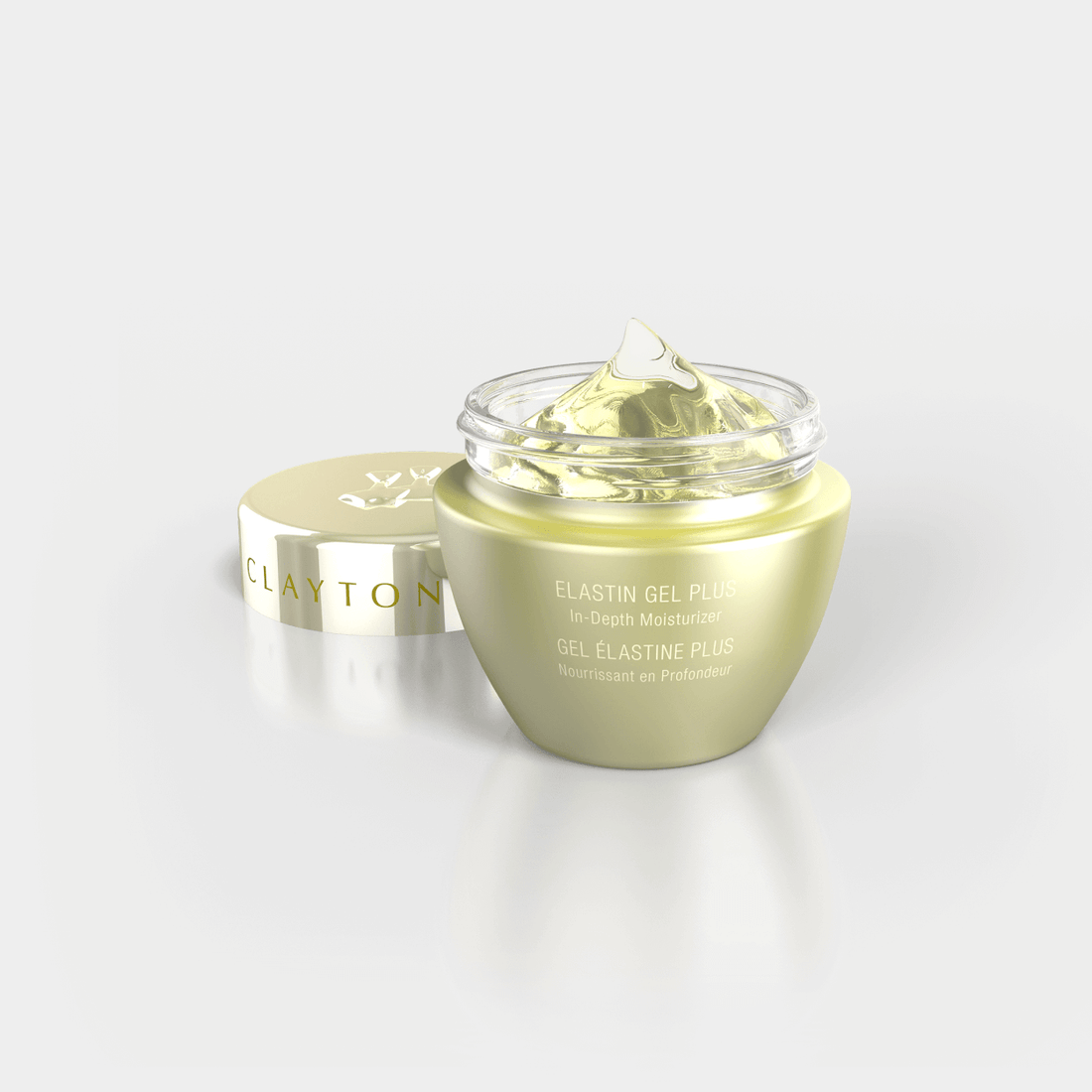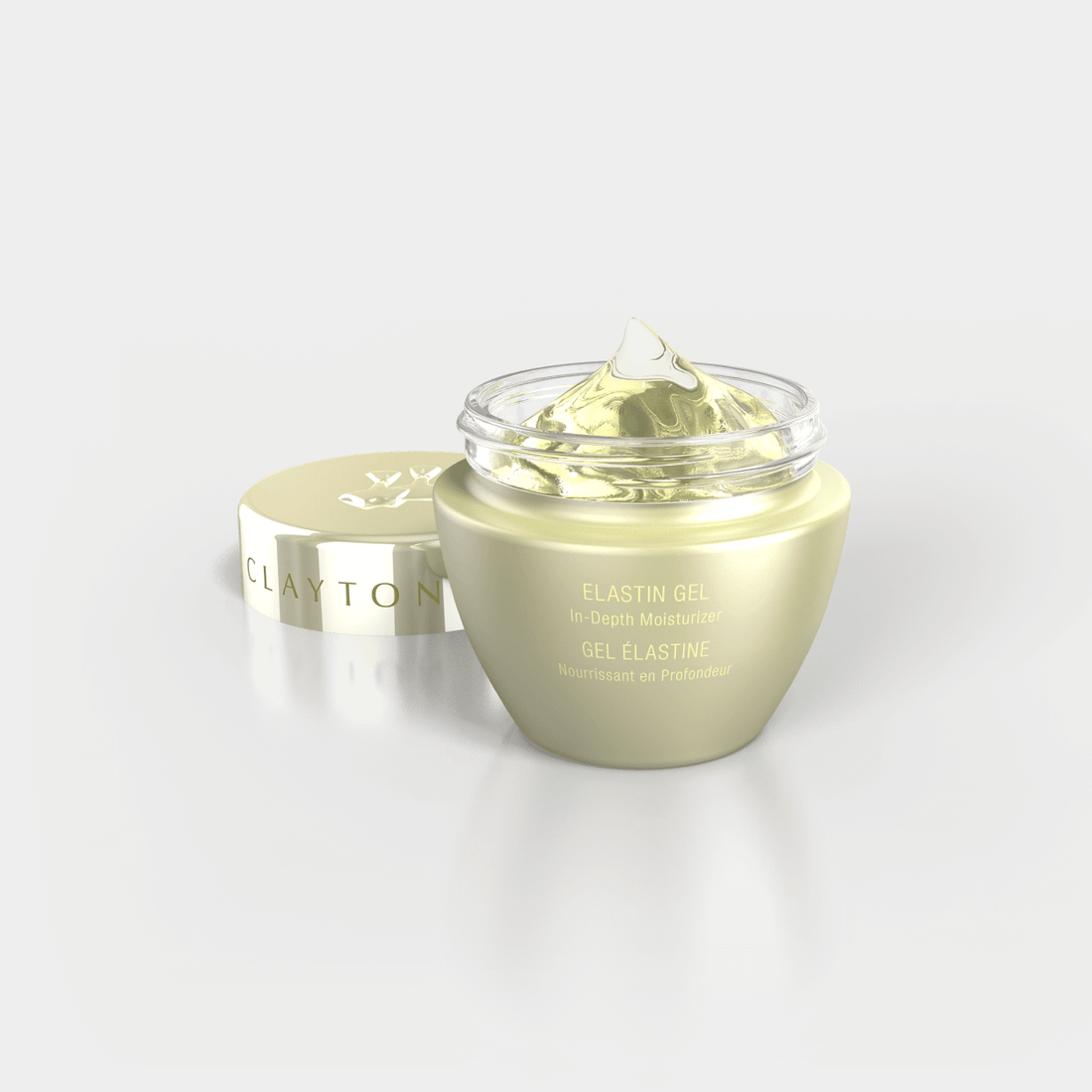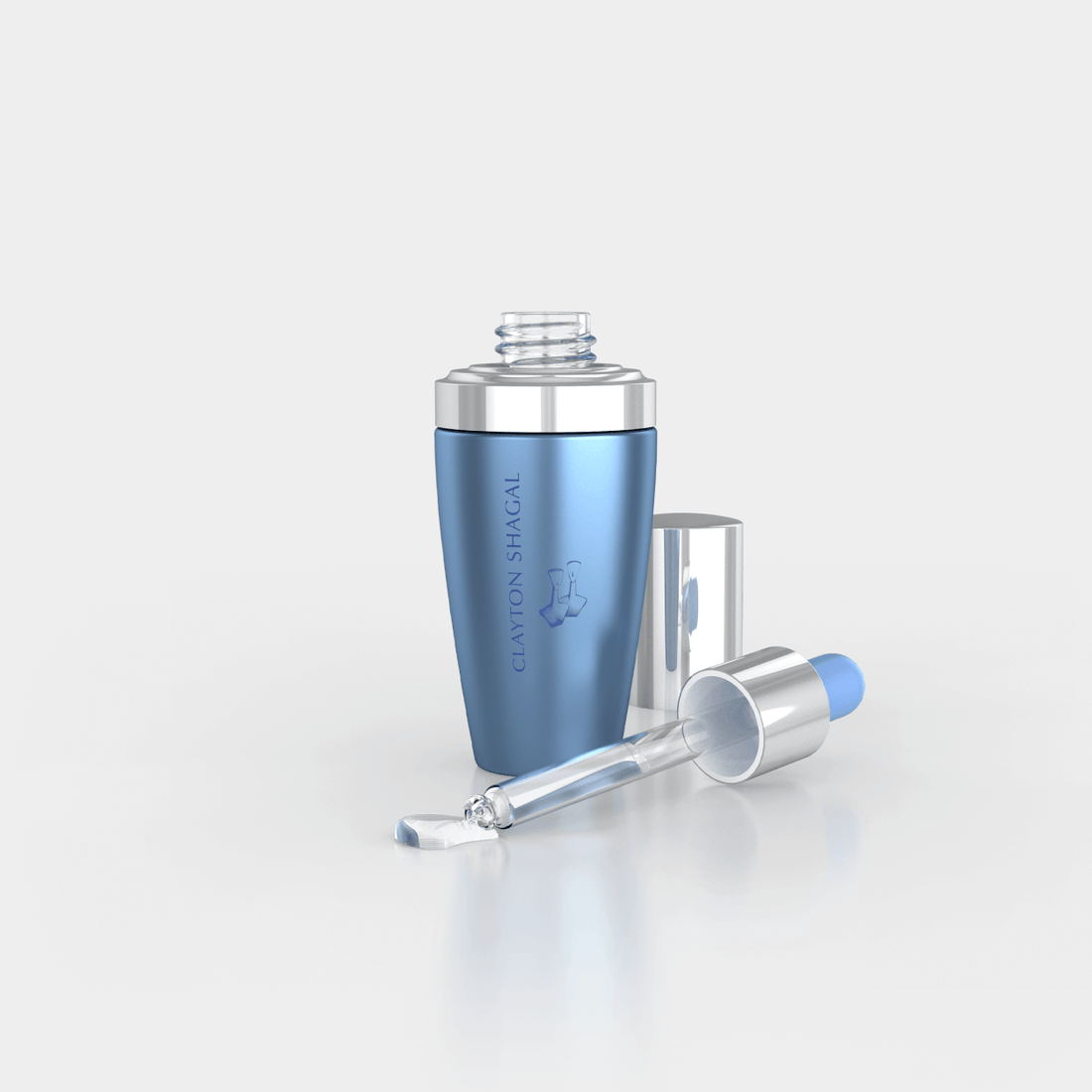
L'élastine
The natural supplement par excellence to collagen
Our chemists have realized the important function of the protein elastin in the skin.
In order to preserve the hydration and elasticity of the skin, our laboratory has taken a particular interest in the functioning of elastin in order to fully understand the origin of its effectiveness as well as its degradation process.
Elastin is the most important protein of the elastic fibers located in the connective tissues (dermis). The components of this protein influence the elasticity and firmness of the skin. Although elastin represents only a small percentage of the composition of connective tissues, it plays a crucial role in the hydration of the skin.
-
The passage of time
In order to help you understand how elastin works in interaction with collagen, let's take a very concrete example from everyday life: that of a few pencils that we want to bind into a bundle. Spontaneously, we use a rubber band. Well, that's exactly what elastin (the rubber band) does in relation to collagen (the pencils): it binds them together!
When you are young, the elastin fiber is thin and stretchy. The skin is then fresh and supple. Unfortunately, with age, changes in the dermis lead to a loss of elasticity and moisture in the connective tissue. The fibers then tend to thicken excessively, causing damage to the elastin proteins. This is when sagging and multiple other problems appear that denote physiological deficiencies and, therefore, accelerate the aging process, whether premature or biological, leading in particular to the formation of wrinkles in the skin.
-
The Clayton Shagal Elastin difference
The composition of elastin, its degradation, its reconstruction and the different extraction processes used have a huge influence on the quality of elastin. Unfortunately, several competitors have neglected the process to follow as well as the patience and delicacy with which each operation must be carried out during the extraction of this macromolecule.
The extraction of the elastin macromolecule is a meticulous and extremely precise process. Not only must the molecular weight be exact, but an integral shape must also be respected in order to obtain a transfer of molecules capable of acting on the turgidity of the skin, in a real way and in the long term.
Most elastins available on the market are primarily hydrolytically broken down and contain molecular weights below 10,000 Gamma, which does not significantly influence elastin results. These elastins no longer contain the typical protein structure of elastin and cannot be compared to Alpha-Elastin Clayton Shagal, both chemically and in terms of their effects.
-
The Clayton Shagal Alpha-Elastin extraction process takes approximately 30 days. The molecule is partially hydrolyzed but its structure remains intact.
By bypassing certain essential steps to manufacture elastin in one day instead of thirty, it becomes difficult, if not impossible, to obtain quality standards and optimal results in terms of hydration and firming of the skin. .
Once again, our chemists showed great ingenuity in imagining the extraction of a macromolecular protein that could then be transferred without injection to human skin. The molecular composition of elastin determines its insolubility in oils and fats. To counter this phenomenon, our laboratory has formulated CLAYTON SHAGAL Alpha-Elastin in the form of gels and extracts that promote deep penetration.
The results
Dermis layers stay more hydrated with CLAYTON SHAGAL High Performance Alpha-Elastin. The volume of elastin existing in the dermis increases giving tone and elasticity to the skin and strengthening the capillaries of fragile skin.
Products containing elastin
The other star ingredients
-

Collagen
Learn more -

hyaluronic acid
Learn more -

Moisturizers
Learn more







